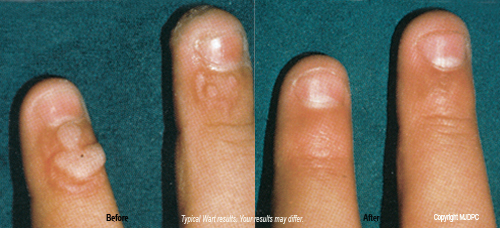Flashlamp Pulsed Dye Laser for the effective treatment of warts
Every year 3.5 million people in the United States are treated for verrucae, or warts. Clinical studies have proven that laser treatments of recalcitrant (resistant) warts is successful where treatment with acids, cryogenics, chemical agents, and surgical excision have failed. In one study, over two-thirds of patients treated had their warts successfully removed in as few as three treatments. Because there is no open wound and minimal pain following the procedure, patients can resume their active lifestyles immediately. Wart removal is offered by our doctor for patients in our region.

How this wart removal treatment works
Treatment works by selective absorption of laser energy by the blood supply which feeds the wart. The treated area then separates from the dermis and gradually sloughs off. Depending on the size and type of wart, some conditions will respond to the very first treatment. However, most will require additional treatment sessions. Our physician will assess whether further treatment is necessary.
What to expect during the laser treatment for wart removal
Treatment consists of placing a small handpiece against the surface of the skin and activating the laser. The laser is pulsed rather than continuous in its action. As many patients describe it, each pulse feels, for a fraction of a second, like a snapping of a rubber band against the skin. Some spots will require one or two more pulses, white others may require several more. Most patients can tolerate the discomfort without anesthesia prior to the treatment. However, you and our doctor may opt to use a local anesthetic. The pulsed dye laser leaves no open wounds following the treatment, resulting in little or no chance of post-treatment infection.
What to expect after wart removal treatment
There may be minor discomfort after the treatment, however, most patients are able to return to normal daily activities almost immediately. You will experience some temporary discoloration of the skin at the treatment site. Over the 24 hours following laser exposure, the gray discoloration will darken and may persist for 1-2 weeks.